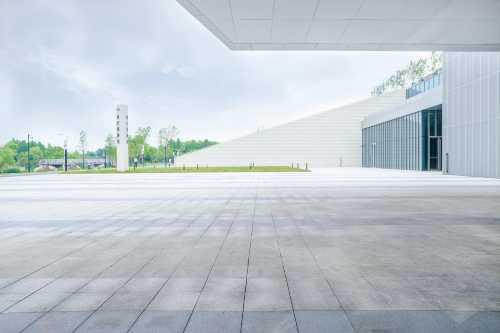Popular Trip Moments
Romance is not just for your wedding day | Qu Shui Garden in Winter | A Musical Journey | 5 Days 4 Nights in Shanghai | Exhibition | Minhang Museum "Zhenguan Jian: A Theme Exhibition of Tang Dynasty History and Culture" | Shanghai North Bund City Walk Route Guide | 🇨🇳 Shanghai Jewish Refugees Museum: Hidden Gem | Spring Staycation | 80 sqm Luxury Suite in the City Center | Ancient Temple with a New Look - Visit Shanghai Qibao Temple | One of the must-stay hotels in Shanghai, luxurious and elegant | Diverse Cuisine - Atour Hotel Shanghai Xujiahui Tianyaoqiao | Zhuang Hong Yi: Nature's Gift | Zhen Guan Jian - Tang Dynasty History and Culture Exhibition | Is the Yuyuan Lantern Festival still worth it now that it charges an entrance fee? | Roaming Shanghai - St. Ignatius Cathedral | Shanghai-Suzhou-Hangzhou Senior Tour: The Ultimate Guide for a Fun Trip | Sihang Warehouse War Memorial | 5-Day Tour of Shanghai, Suzhou, and Hangzhou: Explore Ancient Towns and Villages | Shanghai Disneyland | 5-Day Tour of 3 Cities in East China and Wuzhen: A Detailed Guide to the Most Beautiful Places | River view room qet√ Music and food! | Artyzen Habitat Taopu Shanghai | Shanghai circus and acrobatic show | Shanghai Disneyland | Nanxiang Ancient Town | Disneyland in Shanghai is Something Extraordinary❤️ | Guyi Garden Lantern Festival | Shanghai History Museum | Shanghai Wild Animal Park | Qibao Ancient Town | Wow! There is such a hidden ancient house in Shanghai, and even Hermès chose it as a show venue!
Popular Travel Types
Recommended Attractions at Popular Destinations
Bangkok attraction near me | Manila attraction near me | Tokyo attraction near me | Taipei attraction near me | Hong Kong attraction near me | Seoul attraction near me | Kuala Lumpur attraction near me | Los Angeles attraction near me | Shanghai attraction near me | New York attraction near me | Shenzhen attraction near me | Osaka attraction near me | Singapore attraction near me | London attraction near me | Guangzhou attraction near me | San Francisco attraction near me | Beijing attraction near me | Macau attraction near me | Bali attraction near me | Jakarta attraction near me | Paris attraction near me | Ho Chi Minh City attraction near me | Istanbul attraction near me | Phuket attraction near me | Chicago attraction near me | Seattle attraction near me | Toronto attraction near me | Orlando attraction near me | Cebu attraction near me | Chiang Mai attraction near me
Popular Attractions
The Star, Sydney | Grandview Mall | Government Gardens | Cuba Street | Phi Phi Islands | Zhangye Colorful Danxia Scenic Spot | Deer Park Heights Queenstown | KL Hop-On Hop-Off | Wellington Cable Car | ZORB™ Rotorua | Obelisco | VinWonders Phu Quoc | Boracay | Universal Studios Hollywood | Black Diamond Swing Club | Dawenkou Ruins | Dai Temple | Wushan Tianfeng Scenic Area | City Sightseeing Hue | Barru/ Bølge/ Wave Sculpture | Temple | Mushola Al Amin | Almond Legion Hall | Muzey Derevyannykh Figur | KC Hillcrest Hotel and Golf Club | Park | Frisbeegolf Arboretum parkkipaikka | 二ツ岩 | Stadion | Natural kurdus waterfall, Alibaug
Popular Restaurants in Shanghai
SHUN JI | Jin Xuan Chinese Restaurant | WangBaoHe Restaurant | Ultraviolet by Paul Pairet | Yong Fu (Huangpu) | Fu He Hui | PHÉNIX | IL RISTORANTE - NIKO ROMITO | The Cathay Room | Fu 1015 | LE COMPTOIR DE PIERRE GAGNAIRE | Maison Lameloise SHANGHAI | Ren He Guan (Zhaojiabang Road) | Kurogi | Scena di Angelo | The Kitchen Table | The 1515 West, Chophouse & Bar | Mercato by Jean-Georges | 上海中心J酒店·锦筵 | 上海中心J酒店·弋酒廊Yi Lounge | BaBBo | Obscura | Shang-Xi @ Regent Hotel Pudong | Amazing Chinese Cuisine | NAN XING YUAN | Ji Pin Court | Ming Court | THE HOUSE OF RONG | Taian Table | MEET THE BUND
Popular Ranked Lists
Popular Premium Hotels in Timisoara | Top 4 Best Things to Do in Qianxinan | Popular Luxury Hotels Near The Woodlands | Popular Luxury Hotels in Telangana | Top 9 Best Things to Do in Alxa | Top 20 Local Restaurants in Sapporo | Popular Best Things to Do in Suining | Top 18 Local Restaurants in Seoul | Top 9 Best Things to Do in Aksu Prefecture | Popular Luxury Hotels Near Grasse | Popular Best Things to Do in Guang'an | Popular Luxury Hotels in Palo Alto | Top 3 Best Things to Do in Zaandam | Popular Best Things to Do in Shannan | Popular Best Things to Do in Hengshan | Top 19 Local Restaurants in Kuala Lumpur | Popular Luxury Hotels in Berchtesgaden | Top 20 Local Restaurants in Tianjin | Popular Luxury Hotels Near Chenonceaux | Popular Best Things to Do in Baiyin | Top 4 Best Things to Do in Tongliao | Popular Local Restaurants in Beijing | Popular Luxury Hotels Near Phitsanulok | Popular Premium Hotels in Le Castellet | Top 18 Local Restaurants in Kyoto | Top 18 Local Restaurants in Bangkok | Popular Luxury Hotels Near Milos | Top 13 Local Restaurants in Abu Dhabi | Top 8 Best Things to Do in Qujing | Top 5 Premium Hotels in Bath
Payment Methods
Our Partners
Copyright © 2025 Trip.com Travel Singapore Pte. Ltd. All rights reserved
Site Operator: Trip.com Travel Singapore Pte. Ltd.
Site Operator: Trip.com Travel Singapore Pte. Ltd.












